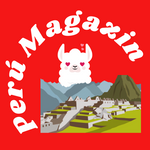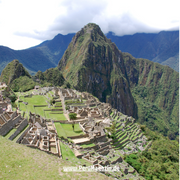Peru , a country with a rich cultural history , offers a fascinating diversity of traditions, art forms, languages and culinary delights. From pre-Columbian civilizations to modern expressions, Peruvian culture reflects the diverse influences and identities that have shaped the country. This comprehensive article looks at the most important aspects of Peruvian culture in detail.
I. History and origins
Peru 's cultural roots date back thousands of years, to prehistoric times when various indigenous civilizations inhabited the region. The most famous among them are the Inca, Moche, Nazca, Chavín, and many others. These civilizations left behind impressive architectural masterpieces, complex social structures, and a rich cultural heritage that continues to this day.
1. The Inca Culture: The Inca are undoubtedly the most famous pre-Columbian civilization in Peru . They ruled over a huge empire that covered large parts of South America. Their cultural heritage is manifested in monumental buildings such as the legendary city of Machu Picchu, the elaborate terraces, streets and fortresses. The Incas also left behind a complex social and political system as well as sophisticated agricultural technology.
2. Other pre-Columbian civilizations: In addition to the Incas, there were numerous other civilizations that shaped Peruvian culture. The Moche, known for their elaborate ceramics, the Nazca, famous for their mysterious floor drawings (Nazca lines), and the Chavín, whose temples housed complex religious rituals, are just a few examples of the diversity and richness of pre-Columbian cultures in Peru .
II. Language diversity and cultural identity
Peru is a country with a remarkable linguistic diversity that reflects the country's cultural diversity. In addition to Spanish, which is the official language, numerous indigenous languages are spoken, including Quechua, Aymara, Shipibo-Conibo, Asháninka, and many others. These languages are not only means of communication, but also bearers of traditions, myths and cultural heritage.
1. Quechua: Quechua is one of Peru's most widely spoken indigenous languages and is spoken by millions of people, particularly in the Andean regions. It is also one of the longest continuously spoken indigenous languages in the world, helping to strengthen indigenous identity and culture.
2. Aymara: Aymara is spoken primarily in southern Peru , particularly in the Lake Titicaca basin. It is closely linked to the history and culture of the Aymara peoples and plays an important role in preserving their traditions and customs.
III. Culinary traditions and gastronomy
Peruvian cuisine is considered one of the most diverse and tasty in the world, thanks to a unique blend of indigenous, European, African and Asian influences. Peruvian dishes are characterized by their variety of flavors, ingredients and preparation techniques and offer a real treat for gourmets worldwide.
1. Ceviche: Ceviche is an iconic Peruvian dish consisting of raw fish marinated in lime juice, onions, chili and cilantro. Not only is it delicious, but it is also an important cultural symbol and part of Peruvian heritage.
2. Lomo Saltado: Lomo Saltado is a popular stir-fry dish consisting of marinated beef, onions, tomatoes, peppers and French fries. It combines influences from Chinese immigration in Peru with traditional Peruvian ingredients and is an example of the cultural diversity of Peruvian gastronomy.
3. Causa: Causa is a traditional Peruvian potato dish served with avocado, chicken, tuna or other fillings. Not only is it delicious, but it is also aesthetically pleasing as it is often presented in different layers and garnished with colorful ingredients.
IV. Folklore and traditional festivals
Peru is rich in folkloric traditions and celebrates numerous festivals that often combine religious, indigenous and cultural elements. These festivals are an opportunity for communities to maintain their traditions, celebrate their history and strengthen their cultural identity.
1. Inti Raymi: Inti Raymi, the Inca solstice festival, is one of the most famous and spectacular festivals in Peru . It is celebrated every year on June 24th in the former Inca capital of Cusco and is a tribute to the sun god Inti.
2. Qoyllur Rit'i: Qoyllur Rit'i is a unique religious festival celebrated every year near the Ausangate peak in the Peruvian Andes. It combines Catholic and indigenous rituals and is an example of the syncretic nature of many Peruvian festivals.
V. Textile art and crafts
Peruvian textile art has a long tradition and is known worldwide for its beauty, complexity and craftsmanship. Indigenous communities still produce traditional textiles, often decorated with intricate patterns and symbols that reflect their cultural meaning.
1. Traditional Weaving Techniques: Peruvian textiles are often made on traditional looms that have been in use for centuries. These techniques are passed down from generation to generation and are an important part of the cultural identity of many indigenous communities.
2. Symbolism and Meaning: Peruvian textiles are often decorated with symbols and motifs that have deep cultural and spiritual meaning. From geometric patterns to animal and plant motifs, these textiles tell stories of traditions, mythology and history. 
VI. Art and architecture
Peru has a rich tradition in art and architecture, reflected in the monumental structures of pre-Columbian civilizations, colonial churches and buildings, and the country's modern art scene.
1. Pre-Columbian Art: Peru 's pre-Columbian civilizations left behind impressive works of art in the form of ceramics, sculptures, and paintings. The Moche ceramics, the Nazca floor paintings, and the Chavín stone sculptures are just a few examples of the diversity and richness of pre-Columbian art in Peru .
2. Colonial Architecture: During the Spanish colonial period, Peru experienced a construction boom that resulted in numerous impressive churches, monasteries, and mansions. The Cathedral of Lima, the Convent of San Francisco and the Church of San Pedro in Andahuaylillas are just a few examples of the country's magnificent colonial architecture.
VII. Modern culture and identity
Modern Peruvian culture is the result of a complex mix of historical, social, economic and political influences. It encompasses a wide range of expressions, from literature and music to film and fashion.
1. Literature: Peru has a rich literary tradition that has produced works by writers such as Mario Vargas Llosa, Cesar Vallejo, and José María Arguedas. These authors have made important contributions to Latin American literature, addressing themes such as identity, colonialism, and social injustice.
2. Music and Dance: Peruvian music is as diverse as the country's cultures, encompassing a wide range of styles and genres, including huayno, marinera, and cumbia. Traditional instruments such as the quena (bamboo flute), the charango (small guitar), and the cajón (drum box) play an important role in Peruvian music.
3. Film and Art: Peru has a growing film industry that has attracted national and international attention. Films such as "La Teta Asustada" (The Milk of Sorrow) by Claudia Llosa and "La Ciudad y los Perros" (The City and the Dogs) by Francisco Lombardi have won awards at international film festivals and addressed important issues in Peruvian society.
Peru offers a rich cultural landscape characterized by a fascinating past, diverse traditions and a vibrant contemporary culture. From pre-Columbian civilizations to the modern art scene, Peruvian culture is a source of inspiration and pride for people around the world.
Sold out
Original price
€29,99
Original price
-
Original price
Original price
€29,99
Current price
€19,99
-
Current price
€19,99









